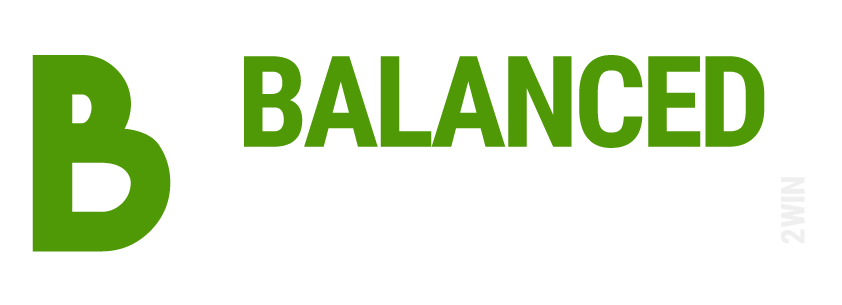
Securing Executive Sponsorship for the Balanced Scorecard
One of my favorite parts of delivering talks on the Balanced Scorecard is the venerable question and answer period, during which the audience grills me with queries large and small on everything Balanced Scorecard, and occasionally beyond. There is a standard slate of questions to which I’ve become accustomed and hear repeatedly: “How big an organization do you have to be to derive benefits from the BSC?” “How long does it take to implement?” “What are some of the key success factors in implementing the BSC?” To use a sports metaphor, I consider these and other similar questions to be ‘soft-balls’ tossed right over the heart of the plate just waiting for me to knock them out of the park with a solid answer. I say that because a body of experience has accumulated over the past eighteen years, which allows me to competently and confidently reply to such questions. However, at some point in virtually every session someone will throw me a curveball, a question that makes my knees buckle like a badly fooled batter, as I search for the best response. That question is simply, “How do I get a reluctant or disinterested executive to pay attention to, or sponsor, the Balanced Scorecard?” The questioner realizes, as does everyone else in the room, that without executive sponsorship the Balanced Scorecard, or any change initiative for that matter, is ultimately doomed to failure.
Although every organization I visit is unique and has their own set of challenges, one common thread uniting all is the declaration:
“We’re busier than we’ve ever been!” Downsizing, rightsizing, early retirement, operational efficiency, lean manufacturing, and a host of other productivity boosters have conspired to not only enhance our output but do so in many cases with considerably fewer resources. So we’re run off our feet and in this environment, with a million possible things screaming for our attention, more than ever we look to our executives for guidance.
What are they watching? What gets their attention?
As the old saying goes, if it’s interesting to my boss, it’s fascinating to me. Employees simply aren’t going to commit to the Balanced Scorecard without a passionate, committed, and informed executive leading the charge.
So how do you install the Balanced Scorecard on their already over-crowded radar screens?
The answer is science. No test tubes, white coats, or sterile labs off the New Jersey Turnpike, mind you. In fact, to those of you possibly intimidated by the very notion of science in an article devoted to the Balanced Scorecard, consider the words of English Biologist Thomas Henry Huxley who suggested, “Science is, I believe, nothing but trained and organized common sense.” And in the remainder of this article we’ll be relying on the trained and organized common sense of Mr. Robert Cialdini, author of the wonderful book “Influence: The Psychology of Persuasion.” Cialdini and his team of researchers have been studying the science of persuasion for over thirty years and have developed a set of straightforward principles we can use when engaging a recalcitrant executive in a discussion of why the Balanced Scorecard is right for your organization. Described below are the principles of persuasion as developed by Professor Cialdini. I’ll briefly outline each, provide an example of the principle in action from ‘real life,’ and then discuss how we can mold it to work for us in our efforts to secure executive sponsorship.
Liking
People tend to like those who like, and are similar to, themselves. Thus, in order to influence others, we must uncover real similarities and offer genuine praise. An article in the Journal of Personality discovered that participants stood closer to one another after learning they shared political beliefs and social values. I’m sure we’ve all experienced the ‘liking’ phenomenon in our own lives. Before I engage with clients in a workshop setting I always try and meet as many of the participants as possible. Inevitably I’ll share something with at least one, perhaps we have a hobby in common, or we root for the same football team, it could be anything. It’s amazing how often those people will tend to be more responsive and active during the subsequent session. It’s simply because we’ve established a connection.
In applying this principle to executive sponsorship, I suggest you focus on the ‘similarity’ principle and link the Scorecard to something about which the executive feels passionate. Any executive is more inclined to lend vocal and active support to an initiative appealing to a core belief or value, thus it is incumbent upon you to find that linchpin and discuss how the Balanced Scorecard can transform it from rhetoric to reality.
For example, perhaps he or she is acutely aware of the power of intangible assets such as culture and customer relationships in transforming your business. Discuss the proven ability of the Balanced Scorecard to translate intangibles into real business value. If quality is their first love, demonstrate the idea of cause and effect, outlining the fact that quality is a result of unique organizational elements such as training and culture, and quality drives customer satisfaction and ultimately financial rewards, all key dimensions of the Scorecard framework.
Social Proof
We follow the lead of similar others so whenever possible use peer power to create influence. In his book Cialdini cites a group of researchers who went door to door in Columbia, South Carolina soliciting donations for a charity campaign and displaying a list of neighborhood residents who had already donated to the cause. They found that the longer the donor list was, the more likely those solicited would be to donate as well. It’s important to note his admonition of ‘similar others,’ when exercising this dimension of persuasion. Influence is reduced when the social proof relies on strangers.
This is perhaps the easiest of the persuasion levers to pull for those of us soliciting executive sponsorship. The business literature is literally crammed with examples of organizations generating breakthrough results from the Balanced Scorecard. With just a modicum of research on the web you’ll doubtless uncover organizations, or in Cialdini’s words similar others, that have harnessed the power of the Scorecard to tremendous advantage. Share these stories with your executive and watch their antennae go up.
I actually used this technique to secure one of the largest clients I’ve had since launching my company. Several years ago I received a call from a senior-level manager at this particular company who informed me that the Scorecard could be a perfect fit, given the fact they had just launched a new strategy. Several calls, meetings, and weeks later I found myself in the CEO’s suite – yes suite. I was convinced the timing for a Scorecard implementation was perfect and did my best to outline my rationale. He listened patiently but ultimately demurred and chose not to move forward. Utilizing another of Cialdini’s techniques I had discovered he was originally from Canada. After the meeting I arranged for a high profile Canadian CEO client of mine to call him regarding the benefits of the Scorecard. Presto, I had an engagement a few days after that magic call. Such is the power of peers.
Authority
People defer to experts in all situations. In fact, a single expert opinion news story in The New York Times is associated with a two percent shift in public opinion nationwide, according to a 1993 study. Airing the expert’s view on television can sway public opinion as much as four percent.
This is a technique upon which I, and virtually all consultants, rely heavily. Click on my website at www.senalosa.com and one of the first things you’ll see are pictures of my book jackets. They’re not there because I like the art work – although I do. The books are a direct message to visitors that I am indeed an expert in this field and they are very safe in my hands. The use of expertise to influence executives is certainly not lost on my clients. I’ll often receive calls from prospective clients telling me that although the CEO understands and believes in the Scorecard, “They need to hear it from an expert.” You too can utilize this mechanism. Hire a consultant perhaps, or simply look for recommendations on the Balanced Scorecard from renowned management experts. Many have advocated the Scorecard as a critical tool in the arsenal of the modern organization.
Scarcity
We naturally want more of what we have less of, so when attempting to influence others it’s vital to highlight unique benefits and exclusive information. Cialdini illustrates this principle with the Bose organization, purveyors of high-end audio systems. When launching their Wave radio a number of years ago the company focused their advertising on what was ‘new’ about the product. New styling, new elegance, new sophistication, and of course new and improved sound quality. The campaign flopped. One simple but fundamental change was made to the campaign and it resulted in a forty-five percent increase in sales. What was that change? The slogan became “Hear what you’ve been missing.” By focusing on loss or scarcity Bose tapped into a universal human phenomenon to want more of what we have less of.
One of the first statistics I use to get an audience’s attention, one meant to elicit a startled response, is this: only ten percent of organizations effectively execute their strategies. That means nine out of ten fail to do so. And even for those that do manage to execute, research has demonstrated that they generate just sixty-three percent of the financial gains anticipated. Talk about scarcity! These nuggets are sure to make the hair on the back of the neck stand up as executives realize that the mere formation of a strategy, even a seemingly brilliant plan, is in no way a guarantee of success. The Balanced Scorecard can parachute to the rescue here. It’s a proven tool for executing strategy used by tens of thousands of organizations around the globe. By dangling this scarcity nugget you should at the very least get the attention of your senior executive, and thus you should be ready with an ample supply of literature and case studies to swing the influence pendulum in your favor.
Reciprocity
Give what you hope to receive and people will tend to repay in kind. Charity organizations are the classic beneficiaries of this time-tested principle. For example, consider the Disabled American Veterans Organization. Using just a well-crafted fundraising letter for many years they generated a very respectable eighteen percent response rate. When they begin stuffing their envelopes with personalized address labels, a very modest gift, the response rate nearly doubled to thirty-five percent.
Gift giving can prove to be a crude application of this principle, however, and not one most of us can rely on in a tangible way. I doubt, for example, you’ll bounce into your CEO’s office with a new Rolex hoping he or she will reciprocate by sponsoring the Balanced Scorecard. But what you can give are results in the form of a pilot Scorecard implementation. Look for an area in your organization where you can launch the Scorecard without fanfare and the inquisitive glare of the senior leadership. Chances are once that pilot demonstrates success your CEO will stand up and take notice. And no wonder, you’re generously supplying the greatest gift of all – alignment and success.
Consistency
People align with their clear commitments, thus it’s imperative to make them active, public, and voluntary.
First let’s distinguish between the three types of commitment outlined in the previous sentence. Active commitments represent those either spoken out loud or written down. Much research has demonstrated that when commitments are active they are considerably more likely to direct someone’s future conduct. As the word implies, public commitments are those made in front of others. Cialdini cites a classic 1955 experiment in which students were asked to estimate the lengths of lines on a screen. Some were asked to write down their estimates, sign them, and turn them over to the researcher. Others were asked to write them down on an erasable slate, then erase the slate immediately. A third group was instructed to keep their decisions to themselves. The researchers then presented all three groups with evidence that their initial choices may have been wrong. By a wide margin the group most reluctant to shift from their original choices was those who had signed and handed them to the researcher. This experiment highlights how much most people wish to appear consistent to others. Finally, in order to prove effective commitments must be voluntary. As the poet Samuel Butler warned more than 300 years ago, “He that complies against his will is of his own opinion still.”
Every single executive I’ve ever spoken with during a Scorecard engagement has told me they fully support the implementation. Every single one. What many of them have failed to do, however, is make that commitment public. It’s nice to tell me, but the audience that really needs the message is their employees, who want to hear their boss shout from the rooftop: “I’m behind this and you’d better be as well!” My first exposure to the Balanced Scorecard was with a utility back in the very early 1990s. As part of our overall Scorecard communication plan we had our CEO issue a letter to employees in which he discussed exactly why we were embarking on the Scorecard journey, what employees could expect to see, and what resources were available. On the bottom of the inspiring note appeared his signature. I’ve always felt that act – of signing the letter – was his public commitment to our implementation. And he never wavered. So, for those of you battling for CEO sponsorship, ensure their commitment is voluntarily, publicly, and actively provided.

